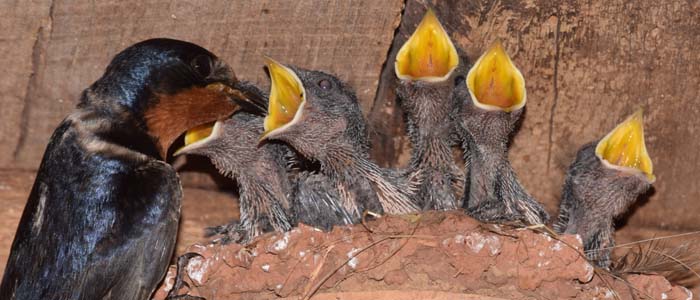
2020 was finally a snake-free year in the swallow colony room. The walls, ceiling, 4 windows and 6 doors were made snake-proof and an extended metal flashing was fitted to one window to provide an entrance for the swallows. Two pairs each reared two broods.
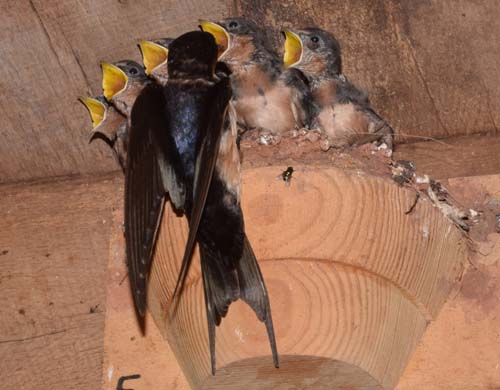
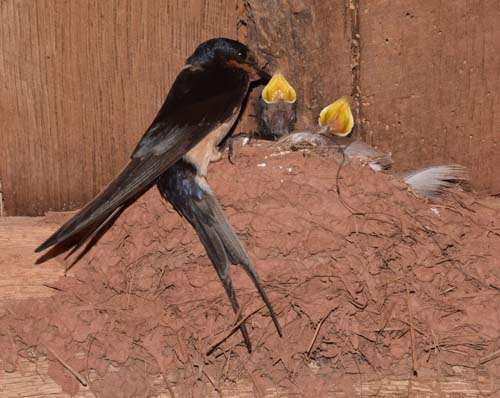
The second pair chose a natural mud nest for the first brood. Only two of the five eggs hatched. The other three eggs remained in the nest unbroken when the two pampered nestlings fledged. The second nesting, in a wooden nest cup, fledged 4 young from 4 eggs.
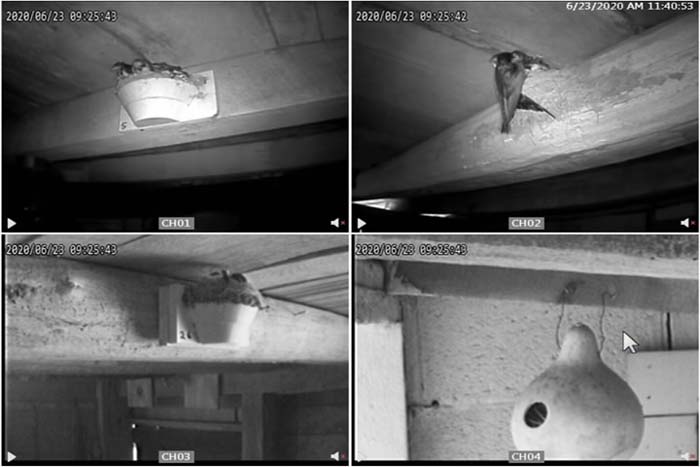
All nestings in the swallow room were monitored with 24 hour video.
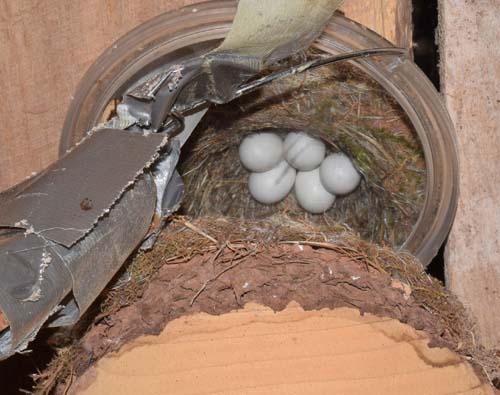
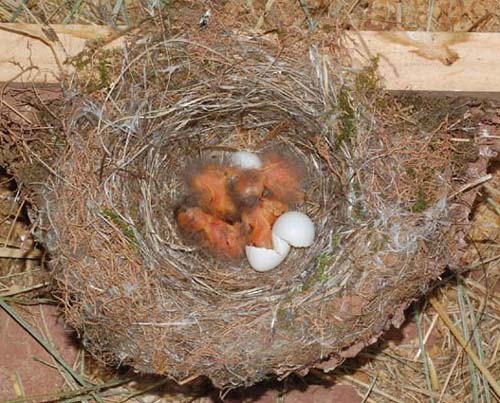
A mirror was used to inspect all nests. This is the second year phoebes have used this old barn swallow nest cup.
Hatch day for the Eastern phoebes. Note the carefully woven nest and bits of moss.
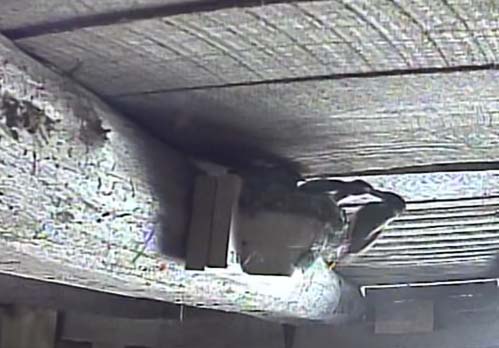
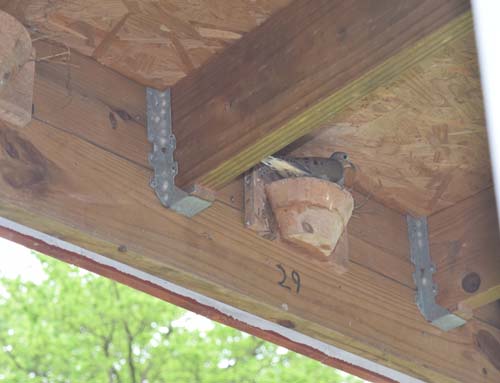
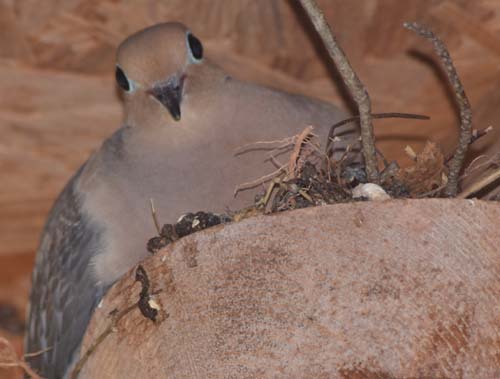
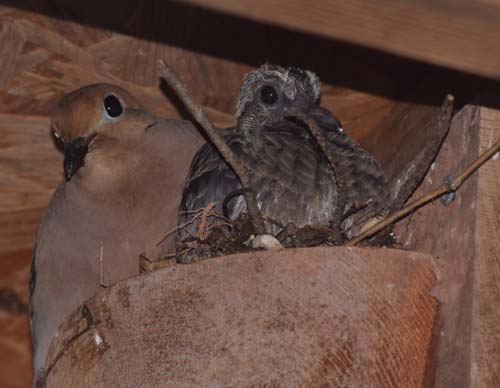
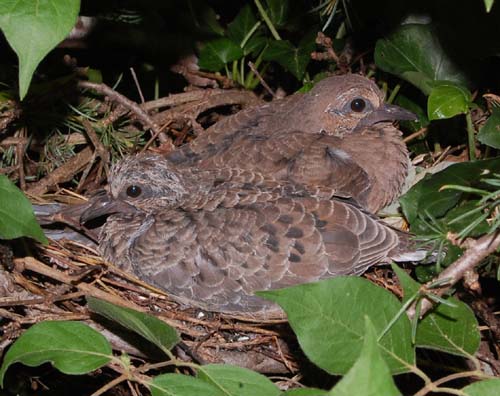
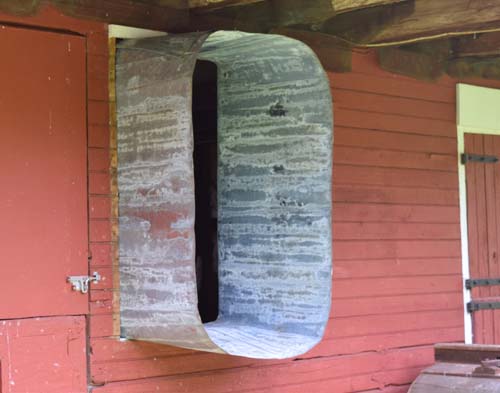
The barn swallows and phoebes immediately took to their new entrance. So far it has proven to be snake-proof.
The black rat snake seen in the basement last year is still here, having left its calling card in the form of a five foot long shed skin last autumn. It is more than welcome in the basement, just not in the swallow room in the barn. A trench in the basement leading to a floor drain is usually wet, especially after the shower is used. And, during cold weather, white footed mice are usually available. I don't know if the snake brumates in winter in the cool basement or remains active as long as water and mice are available. I have a fondness for the little shrews that visit the basement in search of over-wintering insects or an occasional white footed mouse caught in a trap. After catching two shrews in mouse traps several years ago, I now limit the trapping to upstairs where the shrews do not venture. It's funny how we tend to establish a hierarchy of value for other species. For me, these three would rank "shrew - snake - mouse.

The only snake observed near the barn this year is this milk snake. It was found heading up the hill to the second floor of the barn. After playing with it for a moment, I placed it under the sliding door of the barn and wished it "good hunting". I have not encountered the milk snake again. But, it was quite likely a frequent visitor to the barn, since they are mostly active at night.
I don't know if the presence of rat snakes in the swallow room has been the cause of fewer swallows returning to nest in recent years. But, if so, perhaps the number of nesting pairs will begin to increase now that the snakes have been banned.
2021 Barn Swallow Nesting
This was a good year for the swallows with 5 pairs rearing 24 nestlings in their first brood and 4 pairs rearing 16 nestlings in the second brood for a total of 40 fledges. While black rat snakes were still in the immediate area, they were successfully banned from the colony room.
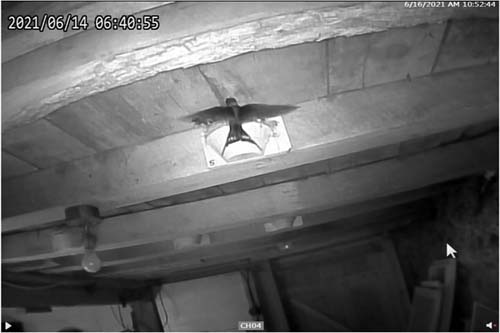
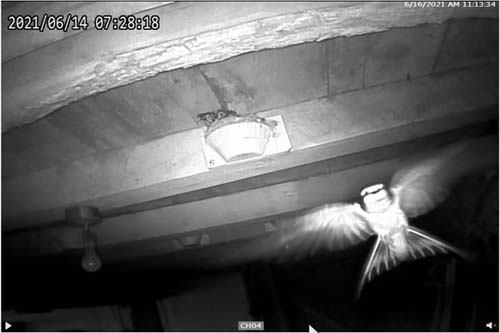
This black rat snake had wrapped itself around one of the rollers on the wood shop door. When I tried to roll the door open, it jammed tight. After shoving and pulling on it from the inside for several minutes, I went outside, only to find the fatally damaged black rat snake. The shop door is on the same wall as the swallow room door, so knowing the snakes are still around makes me more confident that the swallow room is finally snake-proofed.
But, the black rat snake saga does not end here. See the 2021 kestrel nesting including an interesting video of a large black rat snake in action.
2022 Barn Swallow Nesting
5 first broods resulted in 22 fledges and 3 second broods resulted in 12 fledges for a total of 34 successful fledges. The phoebes also had a successful brood of 4 young. The only unusual event this year was a case of egg dumping followed by egg pitching at the same nest. Nest #23 contained 7 eggs, two of which were laid on the same day. Several days later, all 7 eggs were found splattered on the floor under the nest and a previously unused nest on an adjacent joist now contained a single egg. This new nesting resulted in 5 eggs and eventually 5 fledglings. While I will continue to keep the colony room snake proof, the swallows’ mate selection and nesting choices are up to them to sort out.